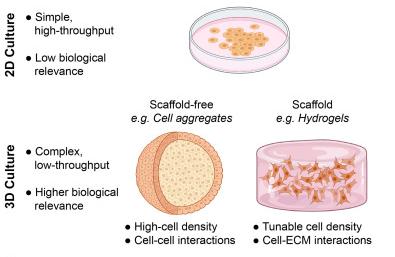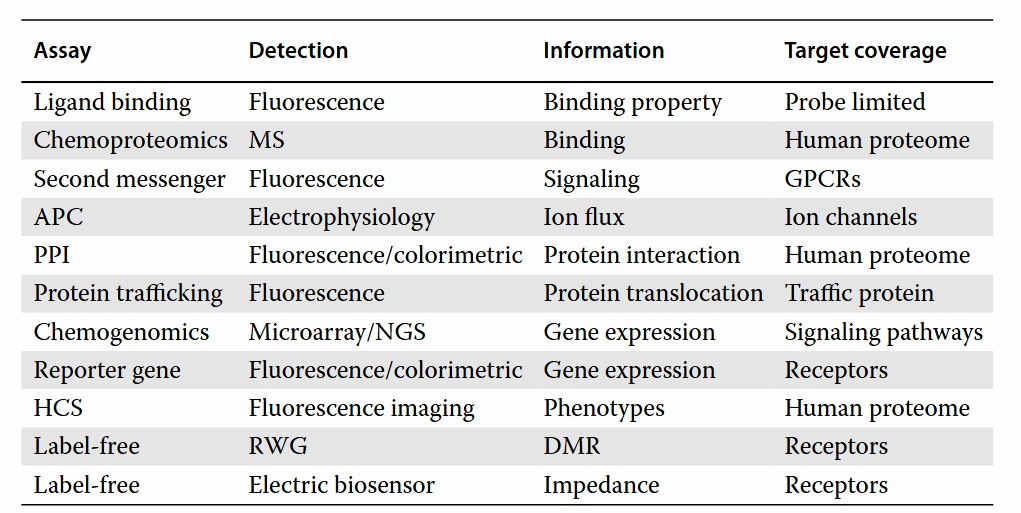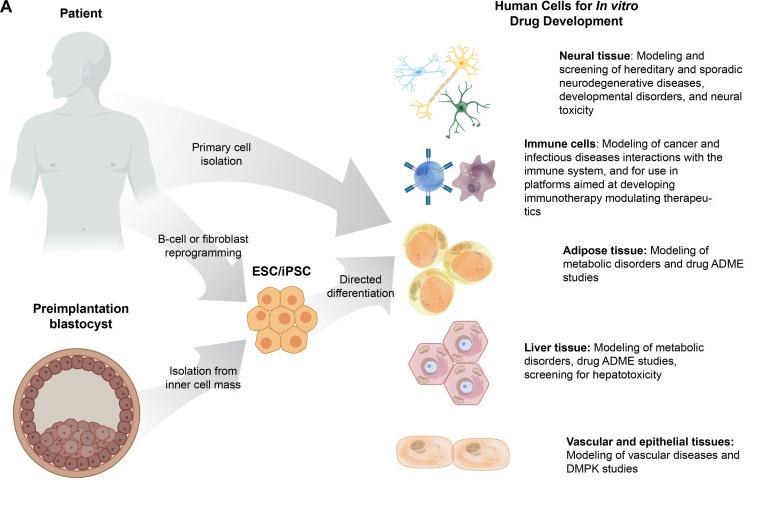Role of Cell-Based Assays in Drug Discovery and Development
Drug development is a time-consuming and expensive process, usually taking 10-15 years from target discovery to clinical trials. Every step of the drug development process is full of difficulties and uncertainty. The traditional drug discovery process includes target identification, compound structure optimization, animal experiments, and clinical trials, but the high rate of failure in this process has prompted researchers to seek more efficient methods. Among them, Cell-Based Assays has become a popular and effective way in modern drug discovery and development.
What is a cell-based assay?
Cell-based assay is a test method using live cells in a cell culture system to test the effects of drugs on a specific cellular process or a specific disease pathway. The cell-based assay delivers biological responses that more accurately reflect in vivo conditions and predicts drug behavior in the human body better than in vitro and in vivo tests. For example, the effect of drugs on cell viability, proliferation, and cytotoxicity, apoptosis, signal transduction, enzyme activity, etc., thereby helping researchers understand the mechanism of action, toxicity, and potential side effects of the drug.
Applications of Cell-based Assays in Drug Discovery
Target discovery and validation:
Targets are the core of drug development, and cell-based assays play an important role in target discovery and validation. By studying the structure, function and regulation mechanism of cell membrane, intracellular or cell surface targets, cell experiments can find out the mechanism of action of drugs in the cellular level, ensuring the reliability and reproducibility of targets. Using gene editing technologies, researchers can screen for potential drug targets in cell models. For example, knocking out a specific gene to observe the reaction of the cells to the drugs, it can be known whether the gene is a potential drug target. In addition, cell models can also be used to validate the function of targets to ensure that the targets have a clear therapeutic effect under physiological conditions. Furthermore, cell experiments can further confirm the mechanism of drug action by observing the impact of drugs on cell signaling pathways.
In the process of target validation, cell experiments typically include the following steps:
- Target Confirmation: By constructing RNAi or gene knockout expression plasmids to interfere with or eliminate target genes, researchers observe the effects of drugs on cell functions to confirm target reliability.
- Target Validation: Further target validation is achieved by quantifying the affinity of small molecules to targets using technologies such as surface plasmon resonance or isothermal titration calorimetry.
- Three-Dimensional Structure Validation: Three-dimensional structures of drug-target complexes are obtained through NMR or cocrystallization experiments, providing standard identification models for subsequent drug optimization.
High-throughput drug screening:
High-Throughput Screening (HTS) is a cell-based drug screening method that can rapidly and massively evaluate the effects of a large number of compounds on specific cellular pathways or disease mechanisms. HTS typically incorporates Cell-Based Assays to provide biological response data that more closely resemble in vivo conditions, thereby enhancing the efficiency and accuracy of drug screening. The 2D cell models are traditional platforms for high-throughput screening and are usually conducted in 96-well, 384-well, or 1536-well microplates, being simple and cost-effective. However, 3D-cell models, due to their closer approximation to in vivo physiological environments, are gradually becoming a new choice for drug screening. For example, tumor spheroid models can better simulate tumor growth and drug response, while drug-induced liver injury models can be used to assess the hepatotoxicity of drugs.
 Fig. 1. Comparison of 2D and 3D cell models in drug screening (Khalil AS, Jaenisch R, et al., 2020).
Fig. 1. Comparison of 2D and 3D cell models in drug screening (Khalil AS, Jaenisch R, et al., 2020).
HTS (High-Throughput Screening) advantages lie in providing more physiologically relevant efficacy endpoints, reducing the complexity of recombinant readout systems, and exhibiting high robustness in high-throughput screening. In addition, HTS can combine various detection methods, such as ligand binding assays, chemical proteomics, second messenger assays, APC assays, PPI assays, protein transport assays, chemical genomics, reporter gene assays, and high-content screening (HCS), to achieve a comprehensive evaluation of the drug's mechanism of action.
Table. 1. Common cell-based assays for drug discovery (Handler N and Buschmann H, 2018)

Researching drug mechanisms of action:
In addition to drug screening, cell experiments can be used to research the mechanism of action of drugs. Observing drug impacts on cell proliferation, apoptosis and migration enables researchers to map drug pathways in cells while gaining a full understanding of drug mechanisms. For example, cell proliferation assays can assess drug effects on cell growth rates, while apoptosis assays can evaluate drug effects on cell death.
In addition, the cell experiment can detect the effects of drugs on cell signaling pathways such as MAPK, PI3K/Akt, JAK/STAT, etc. By detecting the activation status of these pathways, researchers can study the mechanism of action of drugs. For example, using reporter gene technology, you can detect the activation status of signal transduction pathways in real time.
Applications of Cell-Based Testing in Drug Development
Drug toxicity assessment:
Drug toxicity is a major concern in drug development. Cell toxicity assay (MTT, CCK-8, etc.) is a common way to detect the toxicity of drugs. The cell toxicity assay identifies drug effects on cells during initial screening stages which helps avoid clinical trial failures. 3D cell model has the unique advantage of detecting the toxic effect of drugs because it can simulate the physiological and pathological states of in vivo tissue more accurately.
Drug metabolism research:
Cell-Based Assays provide the capability to study drug metabolism in vitro through absorption, distribution, metabolism and excretion processes. Different cell models serve as detection systems for drug ADME including liver cell lines like HepG2 and HepaRG for metabolism studies and Caco-2 cells for intestinal absorption and metabolism research together with MDCK cells which evaluate drug permeability and transporter interactions.
 Fig. 2. More biologically relevant primary human cell sources for drug development can be directly obtained from patients or derived through the differentiation of embryonic stem cells (ESC) or induced pluripotent stem cells (iPSC) (Khalil AS, Jaenisch R, et al., 2020).
Fig. 2. More biologically relevant primary human cell sources for drug development can be directly obtained from patients or derived through the differentiation of embryonic stem cells (ESC) or induced pluripotent stem cells (iPSC) (Khalil AS, Jaenisch R, et al., 2020).
Creative Bioarray Relevant Recommendations
| Products & Services | Description |
| Cell-based Screening and Profiling Services | Speed up your drug discovery with Creative Bioarray's cell-based screening and profiling services |
| Cell Line Testing and Assays | Creative Bioarray offers a wide range of cell line testing and assays from cell viability and proliferation to cellular phosphorylation assays. |
| 3D-based Services | Creative Bioarray conducts the custom 3D-based cell services with the comprehensive and advanced 3D culture systems in the field to ensure the best result for your research goals |
Reference
- Khalil AS, Jaenisch R, et al. Engineered tissues and strategies to overcome challenges in drug development. Adv Drug Deliv Rev. 2020. 158:116-139.